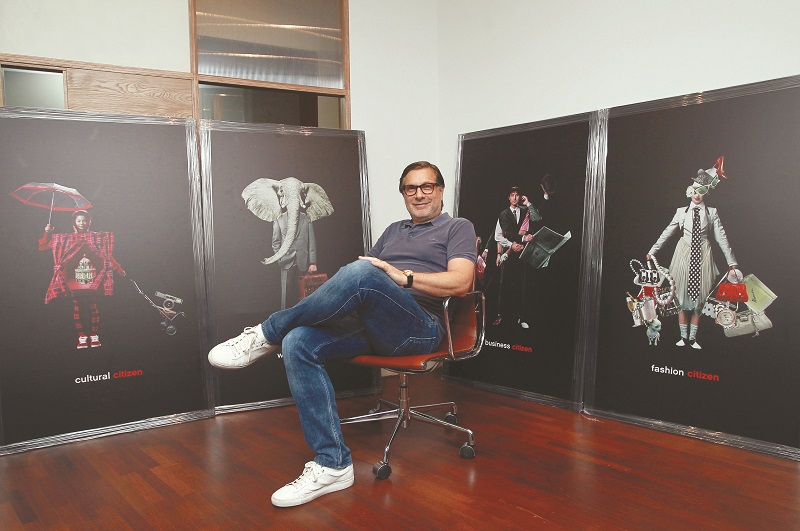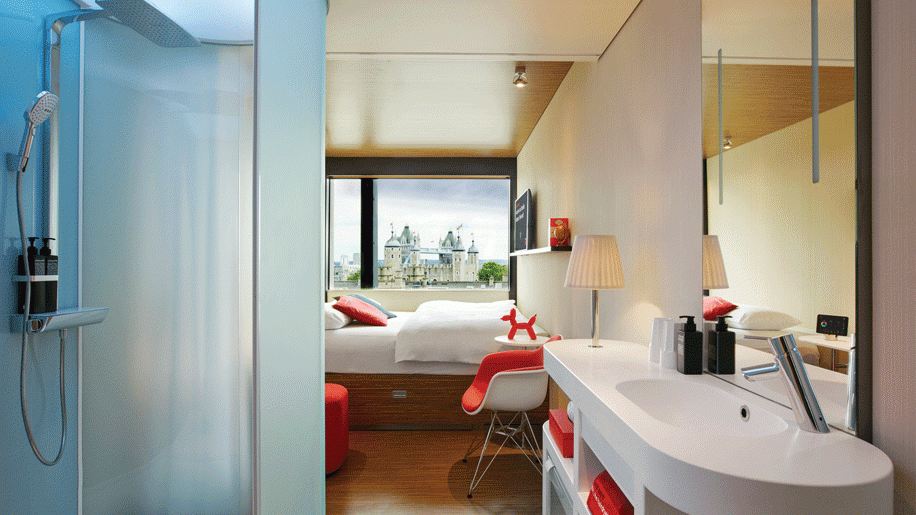
A rendering of citizenM KL (Photo: citizenM)
For decades, hotel check-ins have taken place at a counter in a lobby, assisted by friendly front desk staff. In any of the 30 citizenM hotels, however, you will notice that this is not the case. In fact, bellhops, concierge services and business centres are also rendered obsolete here, but chances are you will not even miss them.
Each aspect of this Netherlands-based hotel chain is carefully designed for the frequent traveller and varies from those traditionally found in luxury hotel models. In place of lobby check-in and in-room dining, for instance, guests will find kiosks that boast seamless one-minute check-in or check-outs — most convenient when in a rush to catch a flight, as well as round-the-clock dining at a canteen, when one wakes up in the wee hours, jet-lagged and hungry.
“We created citizenM for mobile citizens [the M in its name stands for mobile], those who travel a lot and are frequently on the road. Our hotels are exactly what they need,” chief operations officer Michael Levie says about the target market of the brand. He is one of the seven co-founders of citizenM who have varied backgrounds. Chairman and co-founder Rattan Chadha, for instance, has a retail background. “We each bring something different to the table, but we have a common culture. If you share the same values, doing business becomes very easy,” Levie says.
“Although they may be strangers, people live together comfortably … If you are sitting in a restaurant by yourself, it’s boring! It is nice to live in an environment where everything is a bit more social … We do not have a front desk but have replaced it with a big bar in the middle of the living room, which changes the way people engage quite significantly.”

Replacing the space that would typically be the lobby is what Levie calls a living room — a common area that serves as the epicentre of the hotel. Guests can spend time lounging here, sipping a drink or reading a book. There are also iMacs to work on and comfortable discussion areas for business meetings, all in stylish and inviting surroundings, creating a casual, convivial vibe as opposed to cold, serious hotel lobbies, of which Levie was never a fan.
In many ways, focusing on a niche audience has led to the success of this business model, one deemed so effective that it was studied in Blue Ocean Strategy authors W Chan Kim and Renée Mauborgne’s recent Blue Ocean Shift: Beyond Competing — Proven Steps to Inspire Confidence and Seize New Growth for its application of the Eliminate-Reduce-Raise-Create Grid (ERRC Grid), a key blue ocean analytic. Applying the ERRC Grid to its niche market, the brand came up with the key features of the hotel that would appeal to its specific audience.
Lauded for being an affordable luxury hotel — or a hybrid hotel, as it is described — citizenM is founded upon a quest to rethink the conventional hotel model while inspiring a new generation of modern travellers. The first hotel was launched in Amsterdam 10 years ago, and the brand now has a presence in prime locations across Europe, the US and Asia, with multiple hotels in some of the major cities. Kuala Lumpur is next on the list.
Levie tells us the brand aims to “go beyond selling a night’s sleep” but, rest assured, a good night’s sleep is guaranteed. Only one room type is offered at a best-available rate to all guests. Each room is equipped with a king-sized bed and high-thread-count linen for ultimate comfort. The facilities are controlled via a tablet that also stores the room settings, such as preferred temperature and TV stations, in a cloud-based system that enables the room to be pre-set for customers during future visits to any citizenM hotel in the world. It is this type of personalisation that Levie believes a hotel should strive to achieve.

He describes some things that bothered him throughout his years in the hospitality industry. “As a traveller, I want it to be about me; I want personal service and warmth. In so many hotel chains, things are formalised, and there is immediately more distance…That natural connection was one thing I wanted to accomplish.”
The solution to this was found by redefining the role of hotel staff, referred to as ambassadors by citizenM, who function as hosts rather than hotel employees. “Their task is to receive you in your home for the evening. Sure, they can also make you a cup of coffee the way you like or shake you a cocktail too,” says Levie, who has over three decades of hotel industry experience under his belt. He started out managing single units, and eventually handled multi-property responsibilities, which took him to the US, South America, the Caribbean, Europe and the Middle East.
His longest stint was 18 years at the guest-satisfaction-driven five-star Sonesta International Hotels Corp, where he was part of the executive team, before joining Golden Tulip and Krasnapolsky Hotels in early 1999, leading the operational side of the merger. Towards the end of 2000, Levie joined SynXis, a central reservation system with onward distribution capabilities, where he set up the European office and rolled out software for the hospitality industry for Europe, the Middle East and Africa before going on to head the 65-hotel portfolio of Spain’s NH Hoteles (the former Golden Tulip and Krasnapolsky Hotels) for two years. Prior to founding citizenM, Levie started his own hotel management company, investing in single-asset turnarounds.

In terms of design, while citizenM engages local architects as much as possible, creative input comes predominantly from Amsterdam-based Concrete, which designed the chain’s first hotel. Art features prominently at citizenM hotels in the form of original paintings and commissioned works on the façade and interiors. The Times Square Hotel in New York, for example, features a large installation by British visual artist Julian Opie, which turns the typically drab lift into an artwork, doubling as the focal point of the space.
It is no coincidence that all citizenM properties are located in metropolitan areas and key international airports. “The main characteristics of frequent travellers are that they are worldly, tech-savvy, social and like to stay in the city centre. So we like to be between the central business district and where everything is happening because [these travellers] may be working during the day but will want to explore the city by night,” says Levie, explaining why metropolitan areas are the chosen location.
A focus on metropolitan cities across the globe has brought citizenM to KL, specifically bustling Jalan Pudu near Bukit Bintang. As the building was once a hotel, its rooms may deviate slightly from the usual 15sqm required to fashion the typical citizenM room. The brand’s usual practice of featuring artworks of local artists on its walls will continue at the KL property and will include the works of Najib Bamadhaj, Hisyamuddin Abdullah, Fazrin Abdul Rahman and Zulkifli Lee. On what to expect, Levie says the upcoming hotel will maintain citizenM’s core DNA while incorporating the local flavour, making it appealing to tourists and locals alike, all of which will be revealed in due course during its opening at the end of this year.
This article first appeared on Oct 15, 2018 in The Edge Malaysia.


